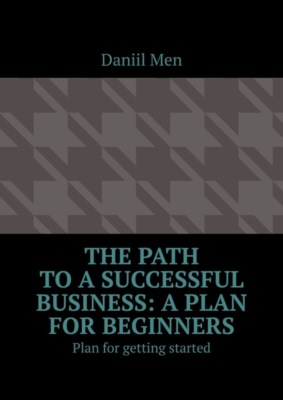Kitabı oku: «Marketing»
Marketing
Secrets
The experts tell all!
Peter Spalton

Table of Contents
Cover Page
Title Page
Marketing covers all parts of your business
Marketing is a philosophy
1.1 Marketing is about customers
1.2 Marketing is definitely not selling
1.3 Adapt and adopt, learn and evolve
1.4 Customers need to be seduced
Identify markets
2.1 Find a gap in the market
2.2 Define your ideal customer
2.3 Understand how and why they buy
2.4 Look at who really makes the decisions
2.5 Know your strengths and weaknesses
2.6 Define your proposition and values
2.7 Research your competitors
2.8 Analyse market trends and forces
2.9 Estimate market size and potential
Create what people want
3.1 Identify features and benefits
3.2 Understand your competitive edge
3.3 Get the mix right to manage life cycles
3.4 Bundle and unbundle
3.5 Match perceived value and price
3.6 Use discounts and warranty wisely
3.7 Look at added-value and value-added
3.8 Create great packaging and design
3.9 Badge to reach new markets
Look where people buy
4.1 Think beyond bricks and mortar
4.2 Identify where your customers will go
4.3 Multiple channels will get you in
4.4 Use silent salesmen
4.5 Add affiliate schemes
Devise your promotional mix
5.1 “Shoot with a rifle, not a shotgun”
5.2 Grab their attention
5.3 Cover all bases
5.4 Design posters and advertising
5.5 Use the press and media
5.6 Create press releases and drip feeds
5.7 Connect to buyers at trade events
5.8 Network with movers and shakers
5.9 Use loyalty schemes
5.10 Always support your brand
Get on the Internet
6.1 Make yourself visible
6.2 Be a shop window
6.3 Write email newsletters
6.4 Build blogs and podcasts
6.5 Offer forums and portals
6.6 Use viral marketing
6.7 Set up third party schemes
6.8 Join networking sites
Make an achievable plan
7.1 Be clear about your ambition
7.2 Create a thorough long-term plan
7.3 Always know how well you are doing
7.4 Not all customers are equal
7.5 Don’t be afraid to adjust your approach
Jargon buster
Further reading
About the Author
Copyright
About the Publisher
Marketing covers all parts of your business
Most people think that marketing is mainly about advertising. A salesperson might regard marketing people as those who do the brochures and look after the website. But both views are only part of the picture, because marketing actually covers almost every aspect of a business.
I’ve been in marketing for 30 years and have worked as a brand manager, marketing director and freelance consultant in almost every type and size of business. And I’ve discovered that, although theory underpins what we all do, marketing is about innovation and the ability to learn from one’s mistakes.
This book has some classic marketing theory written in an easy way. I have split it into seven chapters with 50 secrets that cover all the practical aspects of marketing. You must read them all, even if you think they’re not all relevant to you. Be inquisitive and see what marketing people do elsewhere. Open your mind and ask yourself how each secret could work in your business.
Marketing is a philosophy. You must get yourself into the habit of thinking like a marketing person. Open your mind and imagine how you could seduce your customers and outwit your competition.
Identify markets. Everything starts with the customers and you must understand what makes them tick. To do this you need to be a bit of a clairvoyant and a psychologist, and to learn from experience.
Create what people want. At the end of the day someone must buy something, otherwise you have no reason to be in business. You must create what people want so they will choose you above your competitors.
Look where people buy. These days people don’t just buy from a shop or a salesperson. You must make sure that they can get your product wherever they would expect it to be available.
Devise your promotional mix. There are literally hundreds of ways to promote your business and products. You must pick the tool that’s right for the customer at each stage of the buying process.
Get on the Internet. You don’t need to be an Internet expert or be able to program a computer. But you must have an open mind and the imagination to see what the Internet could do for your business.
Make an achievable plan. At some point someone will ask you to write down what you’re going to do and why. Planning is rarely fun, but it helps you to clarify your thinking and justify what you intend to do.
When you’ve read these 50 secrets you’ll know more about marketing than anyone else in your organization. Then again, I’ve been in marketing for 30 years and I’m still learning!
Marketing starts with your customer and ends in profit.
Marketing is a philosophy
Marketing is much more than just advertising or PR. It’s a culture, a way of doing things that starts with a potential customer and ends up with a profit. In the middle are your competitors who are after the same customers and same profits. Your job, as a marketing person, is to use some proven tools and techniques to attack the competition and gain the customers. It’s about predicting the future and using your imagination.
1.1 Marketing is about customers
If you pick up any of the classic books on marketing, you’ll find a definition that goes something like this. “Marketing is the process where a company satisfies customer needs with a product and service at a price that generates a profit.”
But marketing can be seen simply in two parts. Firstly, you must be able to work out what your customers want, now and in the future, and design a product and service that they will buy. Secondly, you must be able to tell potential customers all about your products and convince them to part with their money.
So a marketing person needs a mix of analysis, guesswork and psychology. It also helps if you are creative, but that’s not essential, as you can pay someone else for creativity. Over the years, marketing people have devised some tools and techniques to help them think it all through. Traditionally they are known as the four Ps of marketing.
1 Product. You must be able to answer three questions about your product or service. Is it what customers want? How does it stack up against the competition? And when will it be out of date?
“The aim of marketing is to know and understand the customer so well that the product or service fits him or her and sells itself”
Peter F. Drucker, management guru
2 Price. What someone will pay is always a judgement, especially if you are the first in the market. It’s always better to price higher than you might initially think because you can always cut prices, whereas it’s almost impossible to increase them later.
3 Place. This is the marketing term for where your customer buys your product. These days, it can be very complicated, incorporating a variety of shop sizes and types, the Internet and mail order. You must manage all those different outlets, or places, so you don’t miss an opportunity to sell your products.
4 Promotion. There’s not much point in creating a product if nobody has heard about it. There are two vital questions. How will customers find out about our prod ucts? And will they have enough information to make a decision?
Fifty years ago, a company made a product and people bought it. Thirty years ago, companies had to sell their products. Today, companies must market their brand successfully, so that people trust them before they buy their products.
You must continuously evolve your products and services to match the changing needs of your customers.
1.2 Marketing is definitely not selling
Many people are confused by the difference between sales and marketing. Just remember that marketing people deal with markets that contain many potential customers, and they talk to them as a group. Whereas salespeople deal with a few customers and talk to them one at a time.
There is a lot of overlap between the two roles and this can sometimes cause conflict and misunderstanding. But it is essential that marketing and sales people work together and support each other to achieve the organization’s business objectives.
one minute wonder Make sure that you involve sales and customer service people as early as possible in all promotional campaigns. This eliminates hostility, misunderstanding and any feelings of things not being invented here.
Marketing looks at what’s happening in the market. It’s important to assess market trends and the competition. These days, most forward-thinking marketing people also involve salespeople to help their understanding. This is because salespeople have an intimate knowledge of individual customers and competitors.
Marketing creates promotional campaigns. This is to increase awareness of the business and its brand. Salespeople must be told what the promotions are doing and when they’re going to happen. Then sales can ride on the back of the campaign and generate additional business.
Marketing prepares promotional material. This is to help potential customers understand what your business does. It includes brochures, presentations and your website. Salespeople should use these to describe the business and explain the benefits of your products to individual customers.
Marketing works with sales. Together they create campaigns to generate enquiries from customers. It is essential that these campaigns support sales activities and objectives.
Sales weeds out the time-wasters. Sales must identify those potential customers who are seriously interested in buying your products. It’s also their job to convince individual customers to make a purchase. Then salespeople will either take an order or the money.
Sales and marketing work together on catalogues. Whether it’s with mail order, over the Internet or through third parties such as distributors and agents, marketing and sales must work together. In this situation marketing must support sales.
To learn more about selling, you should read the Selling Secrets book in this series.
Marketing approaches broad groups of potential customers; salespeople talk to them individually.
1.3 Adapt and adopt, learn and evolve
Marketing people love change because it means opportunity. Markets, the competition and technology never stand still, and you must embrace this culture of constant change. Those businesses that didn’t have been forgotten.
Can you name any company that used to make slide rules or steam cars? The crossbow was destroyed by the musket, the musket by the rifle, and the rifle by who knows what.
The best marketing people understand that they can’t stand still because the world does not stand still. Their philosophy is one that embraces change with open arms. If you want to be successful in marketing, you’ll need to do the same. That means never being satisfied with the way things are, but instead constantly looking at how things could be improved, particularly in relation to the competition.
one minute wonder See what happens when you buy your main competitor’s product. Was it easy? How was their service compared to yours? If you’re not ahead, you need to change.
“Marketing takes a day to learn. Unfortunately it takes a lifetime to master” Philip Kotler, marketing guru
Always keep an eye on your competition. Regularly look at what your competitors are up to. Analyse what they’re good at and what they’re not. Adjust your own approach and play to their weak spots.
Buy your competitors’ products. You must buy their products and give them to your design people. Ask them what’s good and what’s bad about them. Try to understand what they’re doing now and predict what they’re going to do next year and the year after.
See what’s happening in your industry in other countries. Some countries are way ahead of others. See what they’re up to because it’s where your market might be in two, three or five years’ time.
Look at other industries and see how they do things. Adapt their successful ways to your business. Most companies in the same industry do things in a similar way. So a different approach may give you a unique advantage over your competitors.
Attend seminars and workshops. Go to at least two workshops a year on sales and marketing. Network with the audience and find out what works well for them. Even if you don’t learn anything, you’ll remember something good that you’d forgotten.
Regularly review your own performance. Don’t be afraid to admit that something didn’t work as well as you’d hoped. Remember, it’s always better to do something, than regret doing nothing.
The secret of success in marketing is to keep learning and evolving the way that you do things.
Change means opportunity. Embrace it and try new things.
1.4 Customers need to be seduced
Fifty years ago people went to the local shops for most of what they needed. The shopkeeper knew them and took time to talk and ask about their family. In those days, shopping was relaxed and shopkeepers were usually friendly.
Gradually, though, the small local shops disappeared as the large chains and supermarkets took over. Shopping then became impersonal. It became transaction-based: you went to a shop, bought what you needed and left. As it didn’t really matter where you shopped, you weren’t loyal to any particular retail outlet. After all, you could get your favourite brands anywhere. But, at the start of this century, companies realized that they needed to engage with their customers to keep them coming back. Loyalty, lifestyles and aspirations became the buzzwords of the day in marketing.
The Apple example. In the early 1990s, Apple was a small, specialist computer company. Its customers were loyal and most of them worked in the fashion, design and media industries. But, in October 2001, the company launched the iPod, which was aimed at young people. It became a lifestyle purchase and a statement of freedom.
one minute wonder Think of a company that seduces you with it’s advertising and products. What is it about them? Now consider how you could do the same to your customers.
Two years later, the company introduced iTunes, which added a recurring revenue stream. Within seven years Apple had sold 150 million units and transformed the company and the entire music business.
The Emirates example. In the 1980s airlines were totally transaction based. If you wanted to fly, you bought a ticket and that was it. But Emirates broke the mould when it decided to sell the sensuous experience of flying. They changed their slogan to “Fly Emirates, keep discovering”, and put their 16,000 cabin staff in designer uniforms. With minimum cost, they dramatically increased the perceived value of flying Emirates. Since then, the company has won 400 industry awards.
The Red Bull example. In 1987, a European company launched a sports drink called Red Bull. Its marketing was aggressive and it sponsored sports and extreme activities: Formula 1 racing, snowboarding, surfing, skateboarding and windsurfing. It is clearly aimed at young men and now produces a monthly magazine called the Red Bulletin, available online, and free in many bars, clubs and hotels. With its memorable slogan, “Red Bull gives you Wings”, today the company sells more than 3 billion cans a year around the world.
All these companies have one thing in common. They’ve each found out how to seduce their customers effectively. You must learn how to do the same. It starts by clearly understanding what you do and what you want your customers to feel about you. Find out more about this in Secrets 2.2 and 5.10.
Learn to seduce your customers so that they keep wanting you.
Ücretsiz ön izlemeyi tamamladınız.










